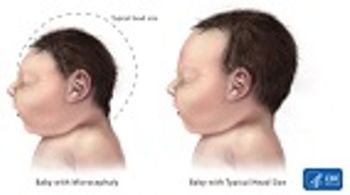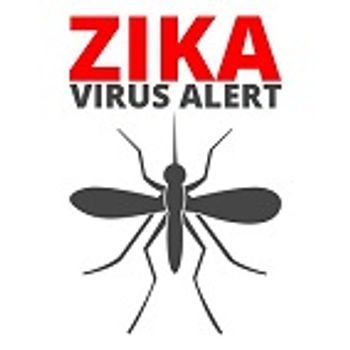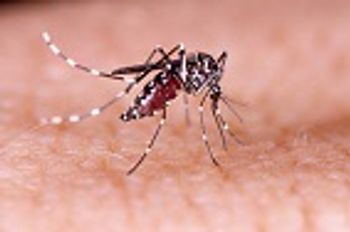
ZIKA
Latest News
Latest Videos
More News

Researchers are gathering more evidence of the exact effects of Zika virus infection on eye health.

Pedro Fernando da Costa Vasconcelos, MD, PhD, director of WHO Collaborating Center for Arbovirus and Research, Evandro Chagas Institute, discusses the likelihood that fetuses congenitally infected with the Zika virus will develop related complications, such as microcephaly.

With so much of the world focusing on Zika virus in the Americas and Southeast Asia, it’s easy to forget that there are other mosquito-borne viruses causing serious public health problems globally—namely, Dengue fever and Chikungunya.

Pedro Fernando da Costa Vasconcelos, MD, PhD, director of WHO Collaborating Center for Arbovirus and Research, Evandro Chagas Institute, discusses the possibility of the Zika virus evolving to cause other complications in the future.

With more than 90 locally transmitted cases of Zika virus infection confirmed in Florida, and states from the southeast to the Midwest fearing similar outbreaks, the Centers for Disease Control and Prevention (CDC) has made bolstering its network of approved testing laboratories for the virus a priority.

A Zika infection case in Utah has raised more questions about virus transmission.

Health officials in Singapore have reported a significant increase in the incidence of Zika virus infection in the country in recent weeks.

Pedro Fernando da Costa Vasconcelos, MD, PhD, director of WHO Collaborating Center for Arbovirus and Research, Evandro Chagas Institute, explains how Zika has evolved since the 1960s.

On the same day officials in Florida declared the Wynwood section of Miami, “ground zero” for the Zika virus in the state, no longer “active” for local transmission, officials from a state halfway across the country expressed concerns over a “pending disaster” involving the mosquito-borne infection.

A study comparing babies born with microcephaly and closely matched, but otherwise healthy, controls has confirmed a link between the birth defect and Zika virus.

The Centers for Disease Control and Prevention may revisit its travel guidance on south Florida as soon as early next week, if there are no new cases involving local transmission of the Zika virus in the region; however, local businesses continue to be impacted.

Using the mainstream media as the medium for their message, some of the nation’s leading physicians urged Congress to pass a “clean, bipartisan funding measure” to fight the spread of Zika, both in the United States and abroad, and to “protect pregnant women” from the complications associated with the virus.

Researchers at the University of Washington may have gained new insight into exactly how Zika virus infection damages the developing brain of the fetus in pregnant women.

Zika’s history as a “tropical” disease plays into the theory that global warming has played a role in the presence of virus-carrying Aedes Aegypti and Aedes Albopictus mosquitoes, and thus the disease itself, in heretofore “temperate” climates such as the southeastern United States.

Pregnant women or women planning to become pregnant concerned about the effects of Zika on their health as well as the health of their unborn children have another potential complication to worry about: miscarriages.

The mainstream media has put the Florida Department of Public Health (DOH) on the defensive over Zika.

The US military has been actively engaged in the battle against Zika, even as more than 100 members of the armed services have been diagnosed with the mosquito-borne virus.

An anxiously awaited vaccine for the fight against Zika may be available sooner rather than later—if its developers and federal health officials get their way.

A multidisciplinary team of researchers from Washington University in St. Louis, Missouri and Colorado State University in Fort Collins, Colorado, may have identified another potential pathway for transmission of Zika virus: tears.

On September 5, officials in the Philippines confirmed the first case of Zika in the nation, an indication that the virus is spreading throughout much of Asia.

American Olympic athletes returned from the 2016 Summer Olympics in Rio de Janeiro with a record medal haul—121 in all, including 46 golds. More importantly, though, none of them came home with the Zika virus, at least according to the most recent reports from the US Olympic Committee.

Add sensory polyneuropathy to the list of potential complications associated with Zika virus, the mosquito-borne infection currently plaguing regions of South America and the Caribbean as well as, in recent weeks, the state of Florida.

Researchers have determined that adult as well as fetal neural stem cells are vulnerable to the neuropathology associated with the mosquito-borne virus that has plagued Brazil and the Caribbean and has recently surfaced in Florida.

In separate announcements, the government agency revealed its plans to award $2.4 million in funding.

Researchers at the University of Texas Medical Branch Institute for Human Infection and Immunity have confirmed pathway for transmission of the Zika virus that may enable the virus to “survive during adverse conditions,” such as the colder and drier climate conditions of the winter months.
































































































































































































































































































